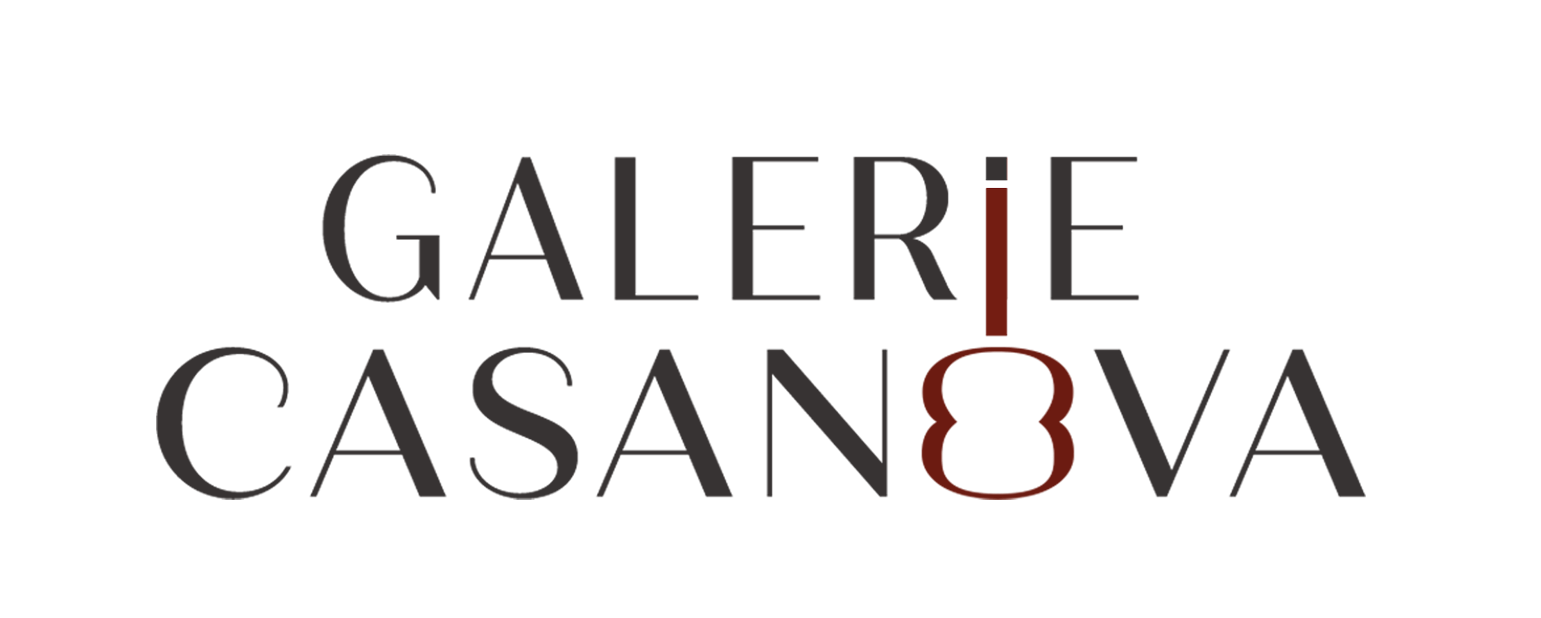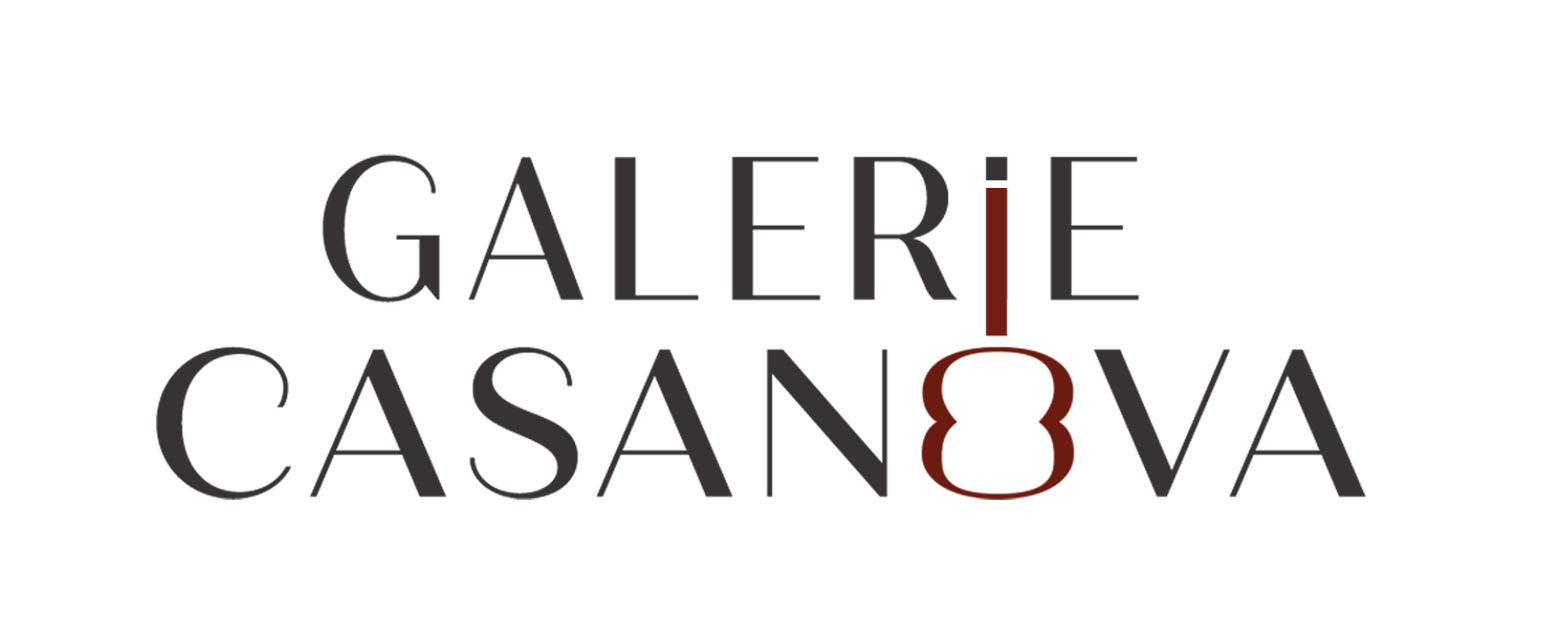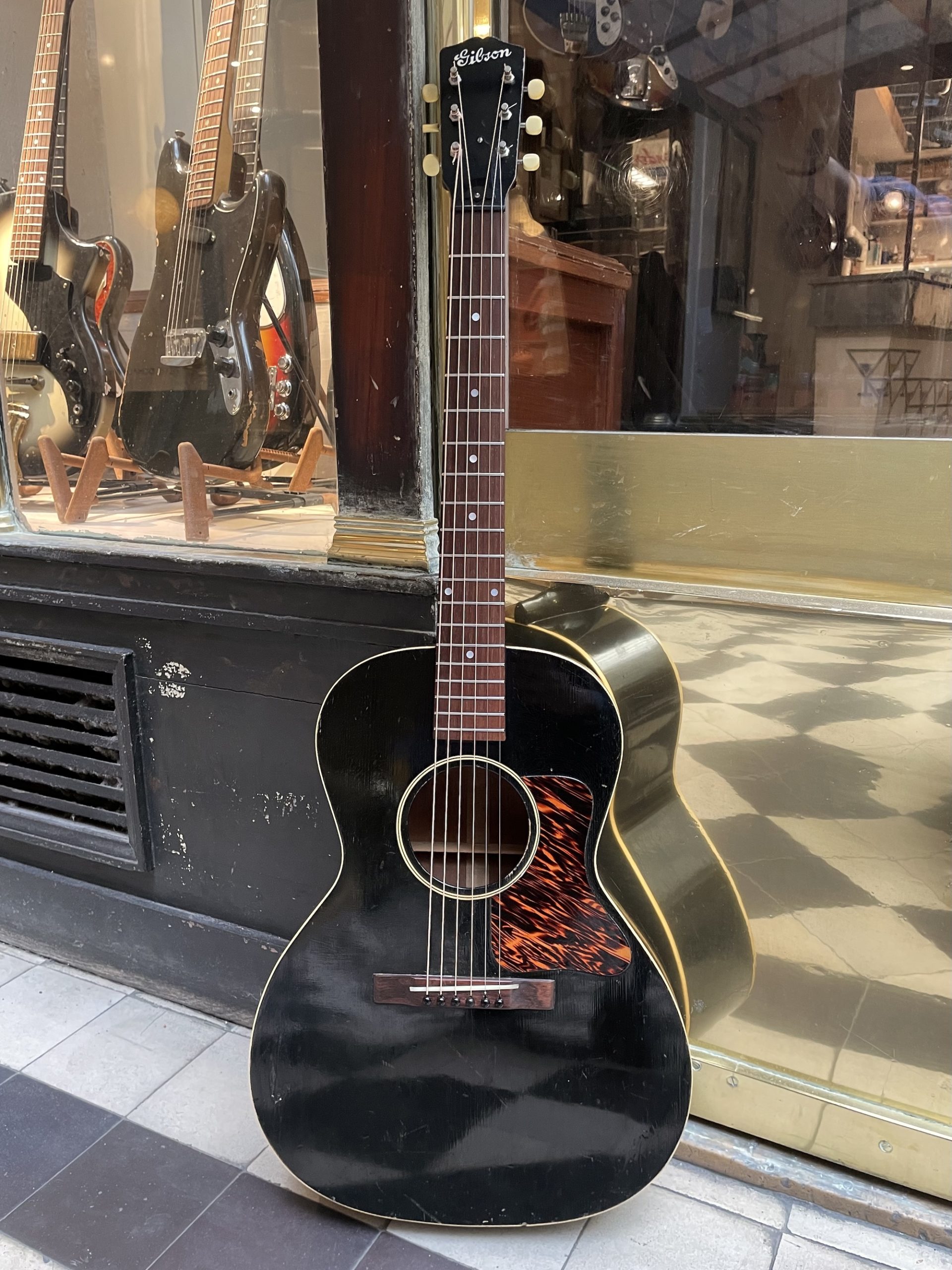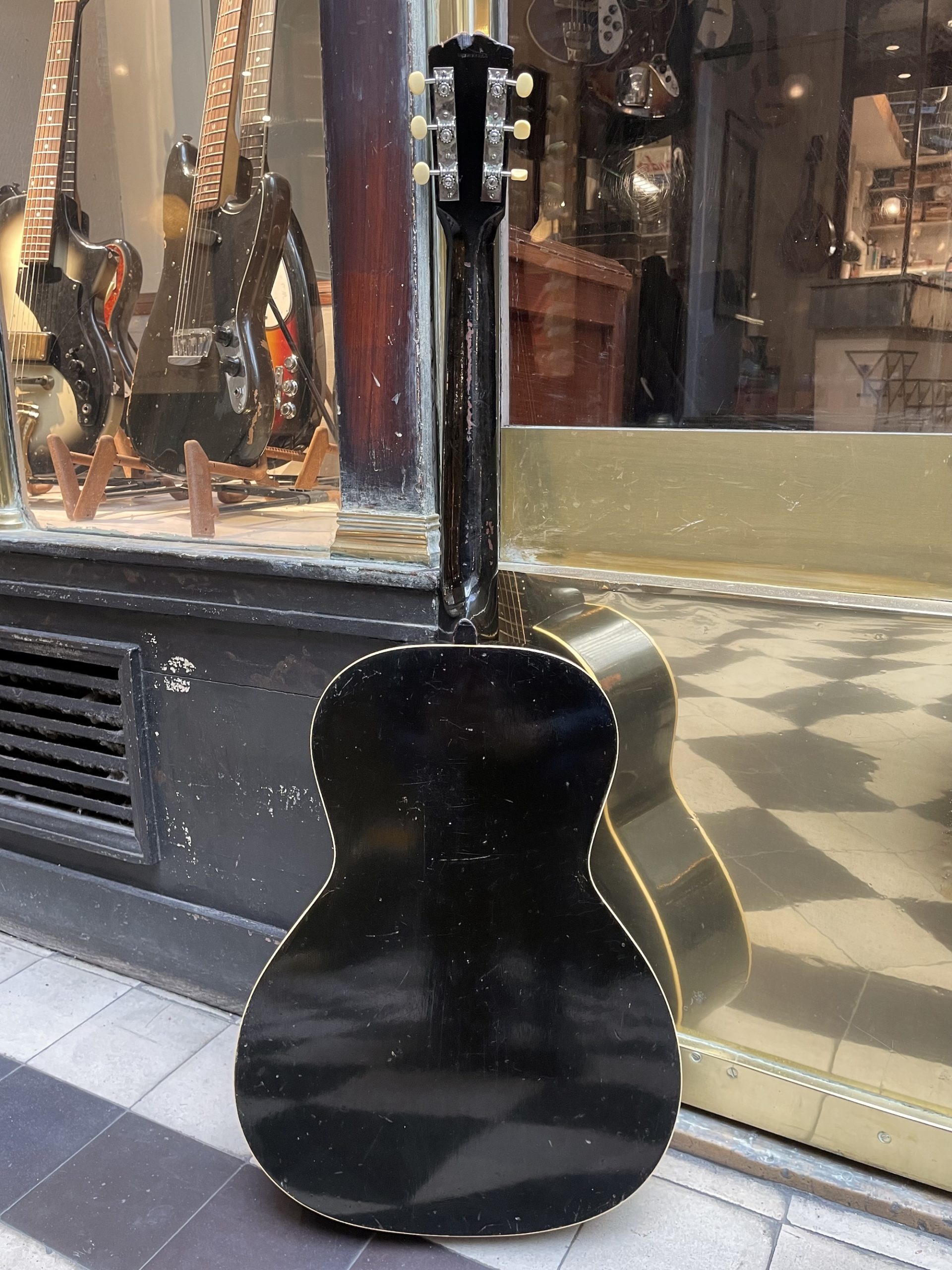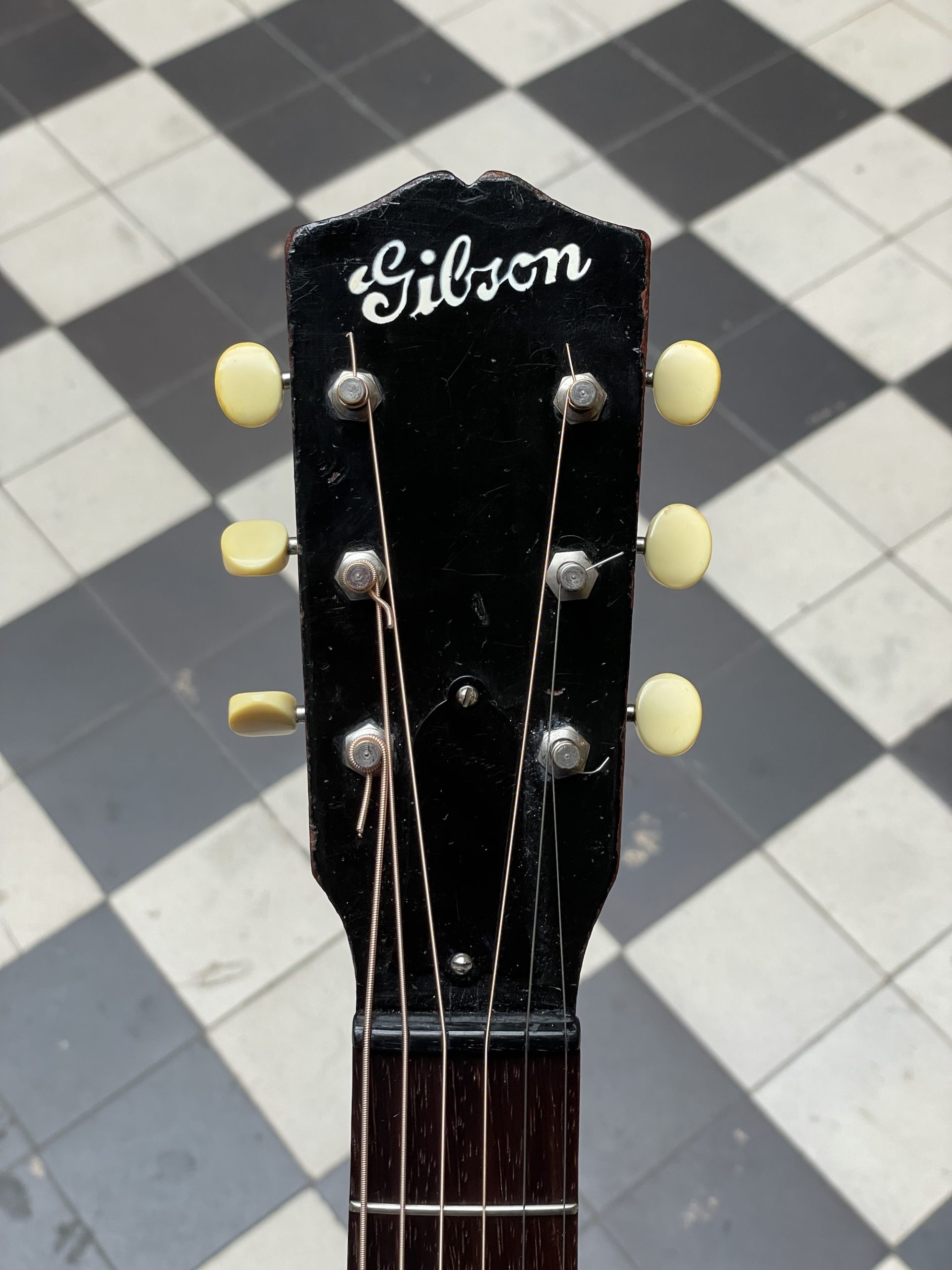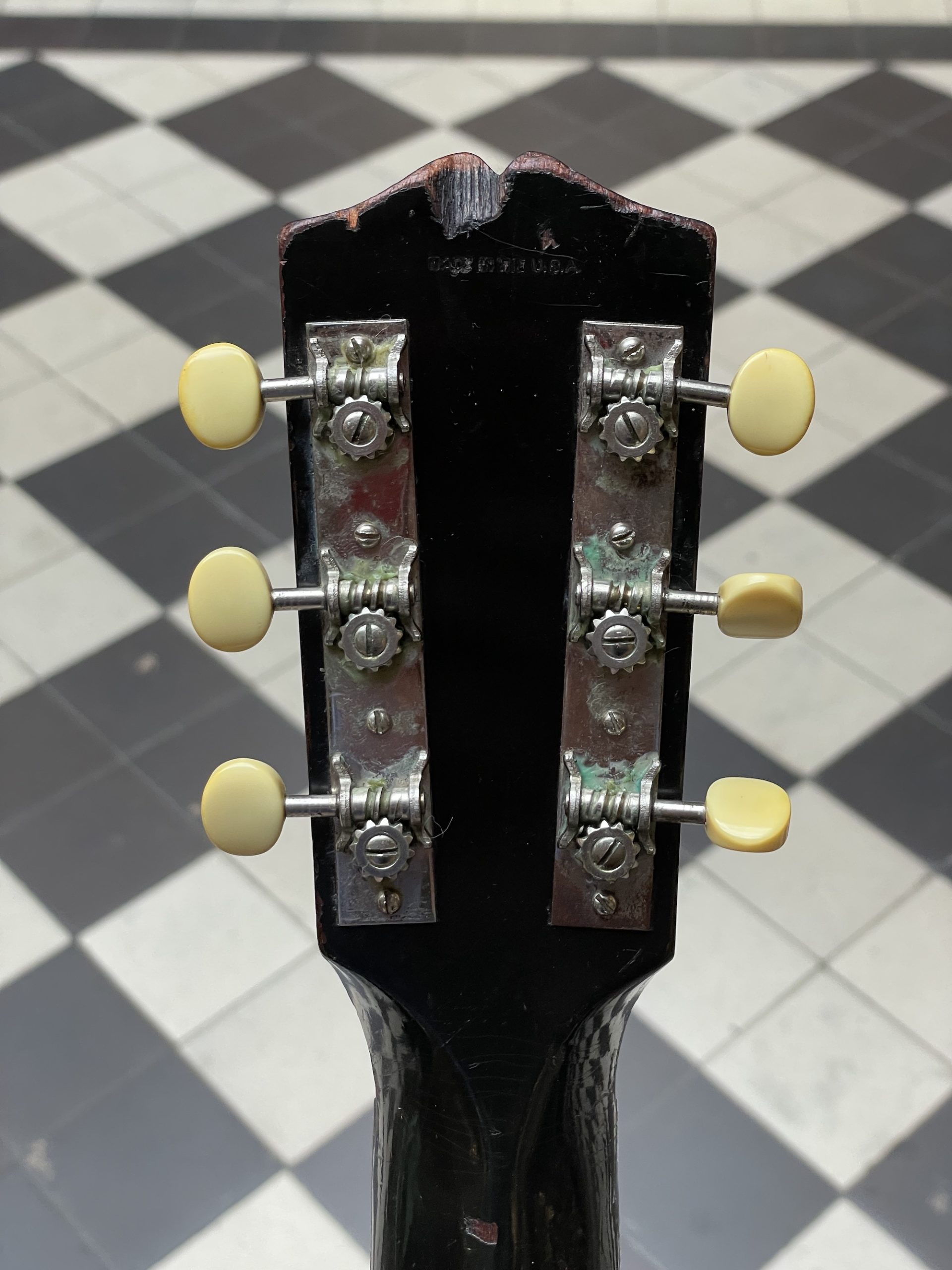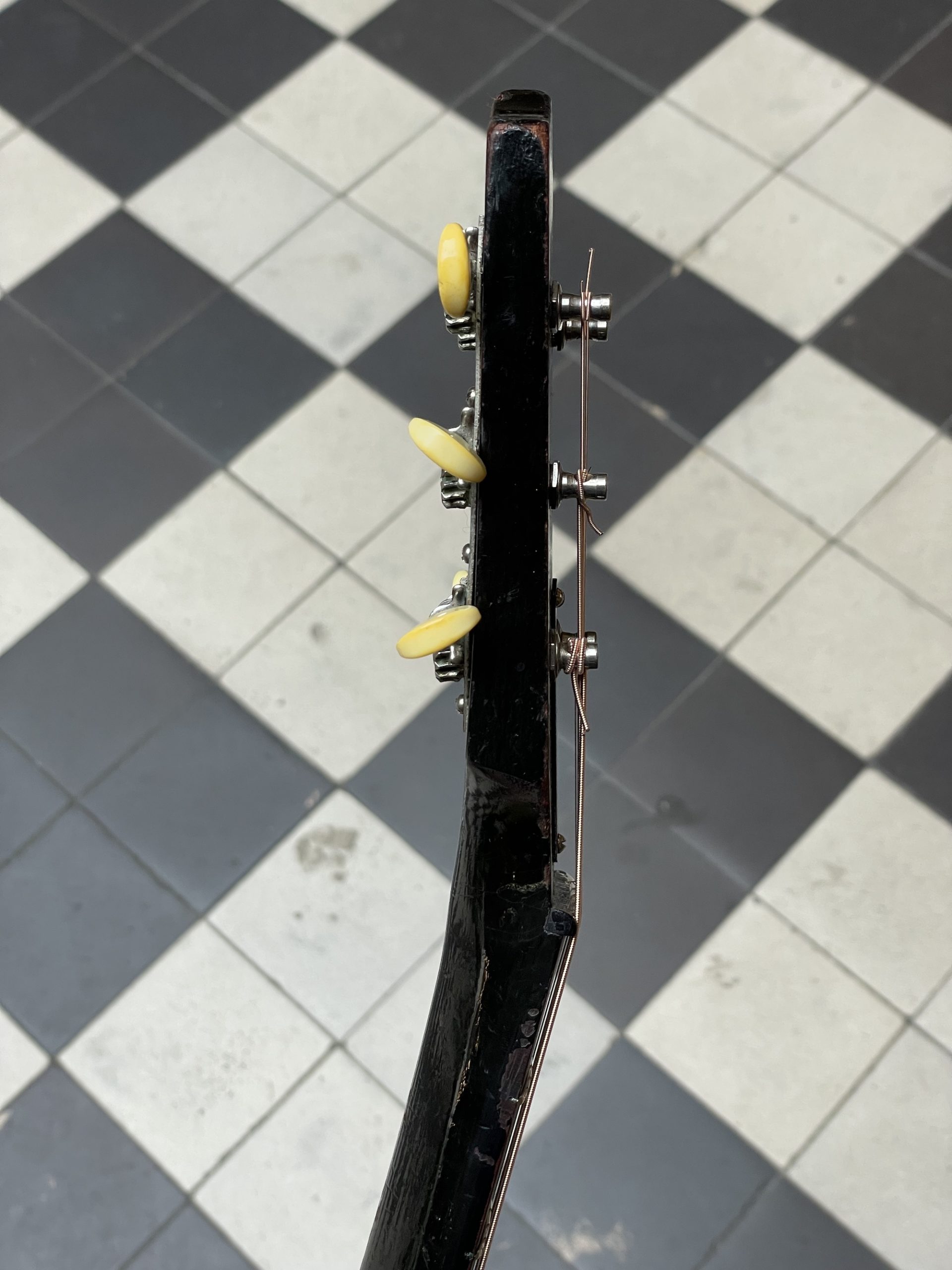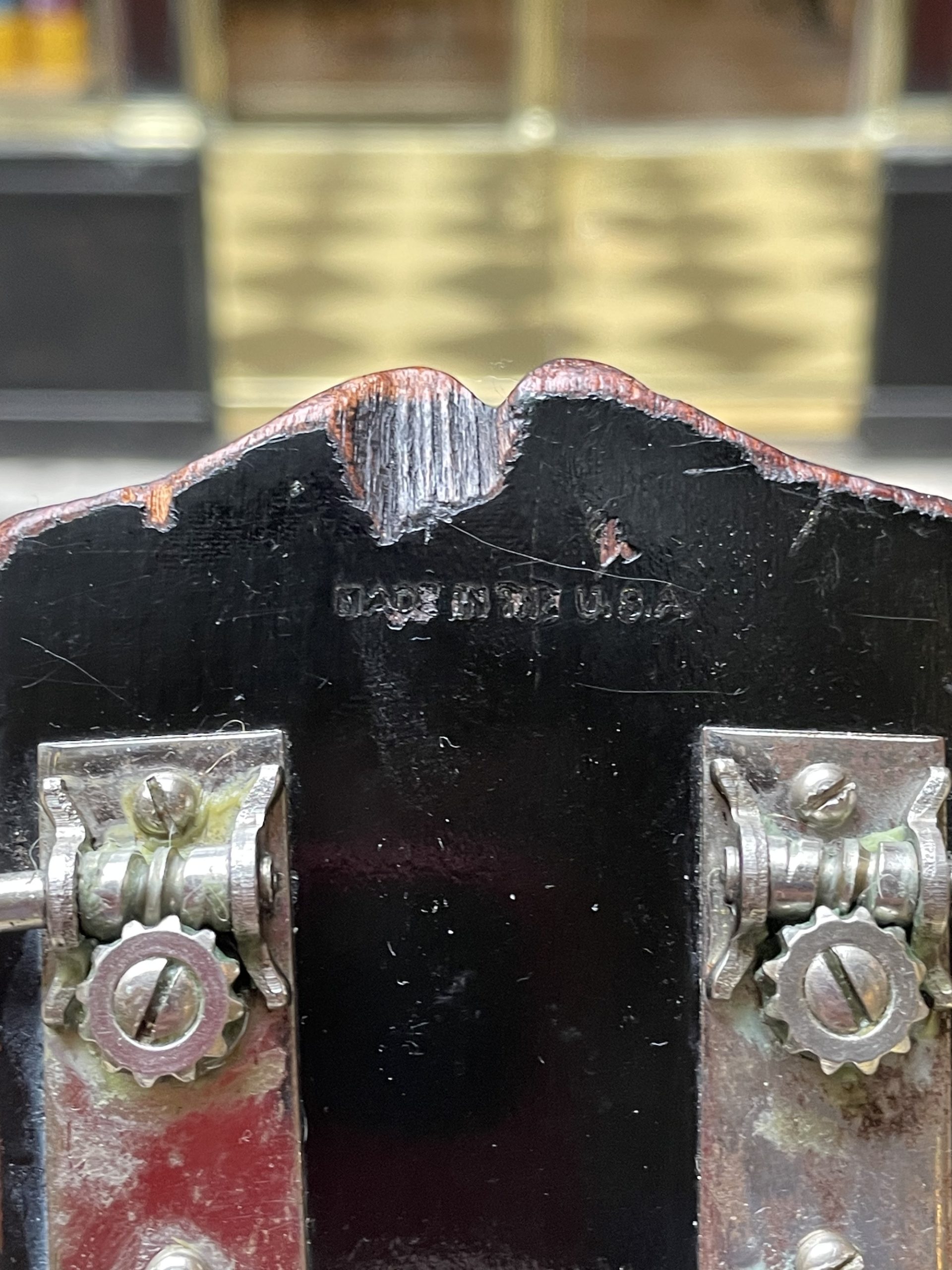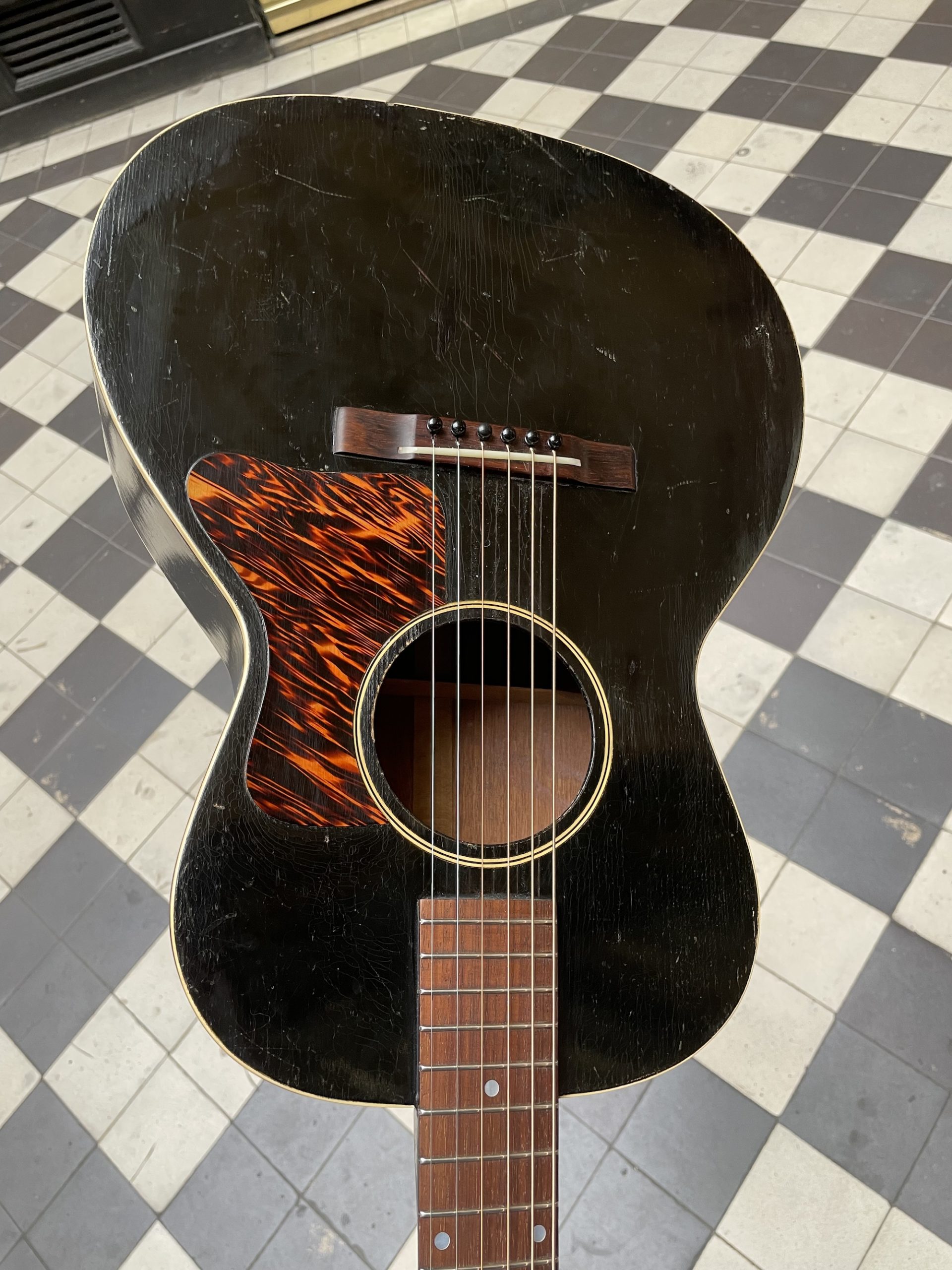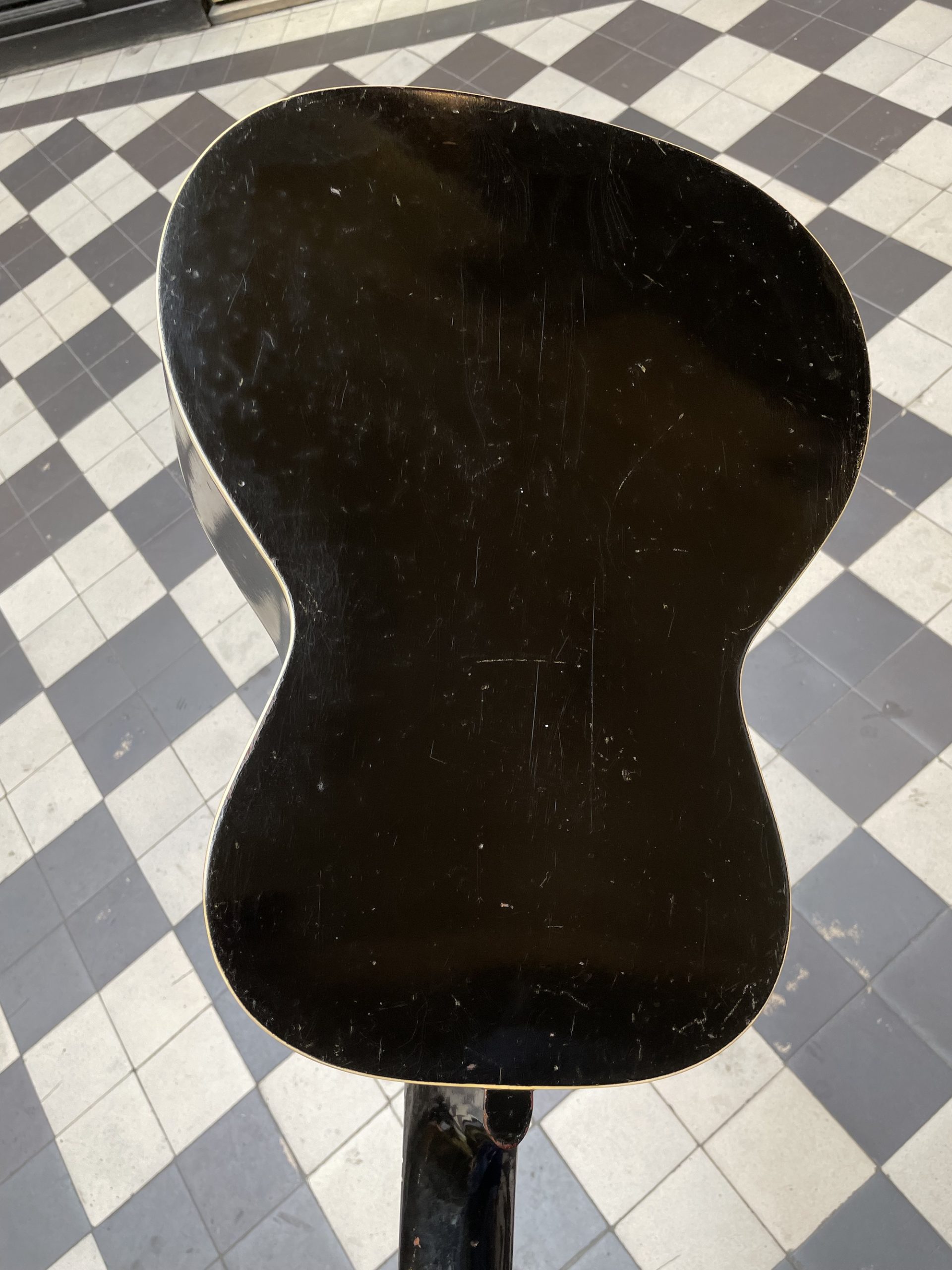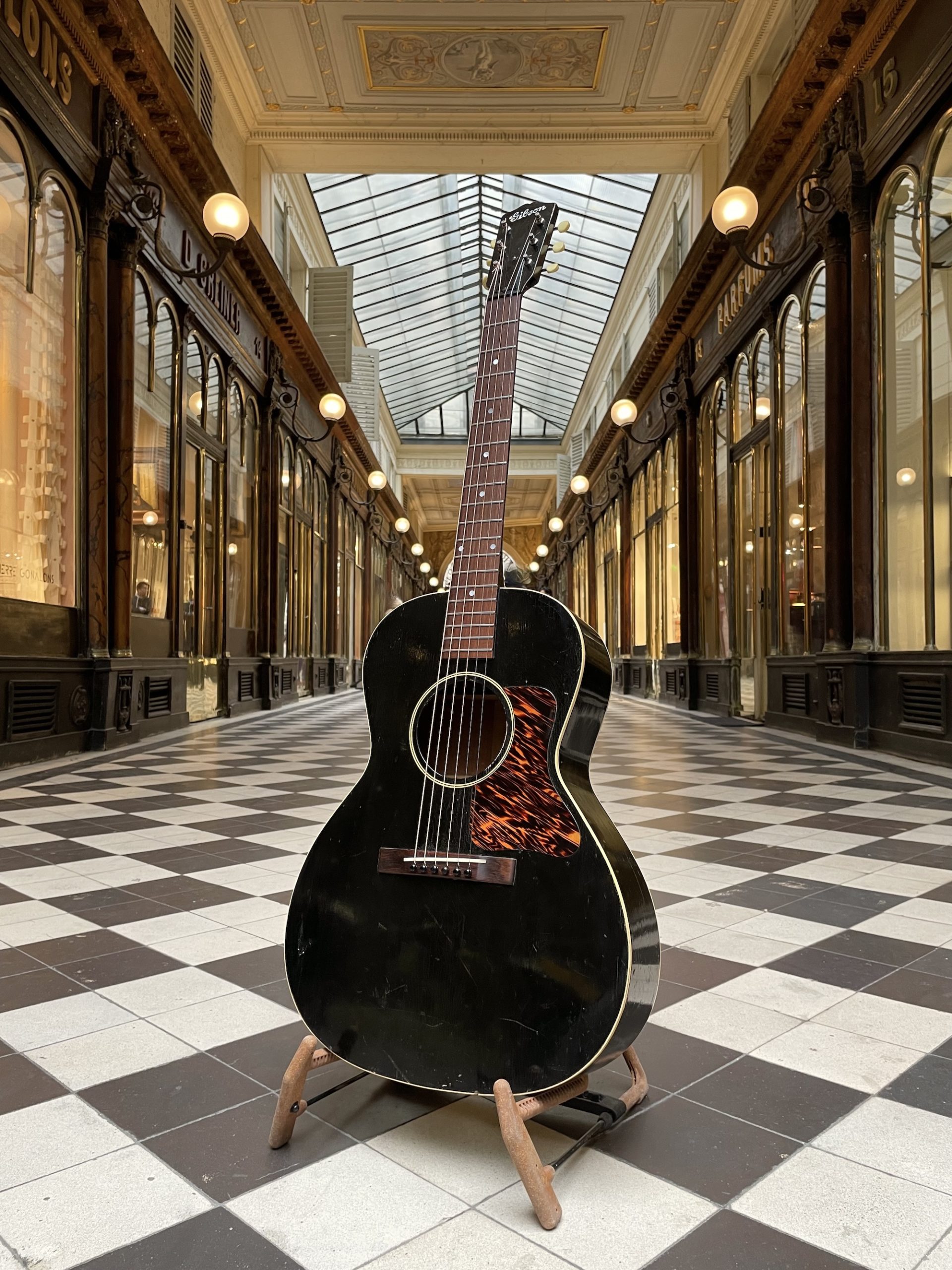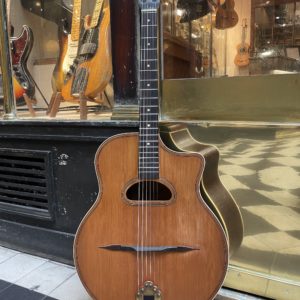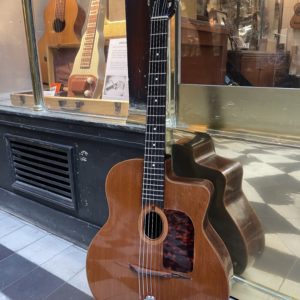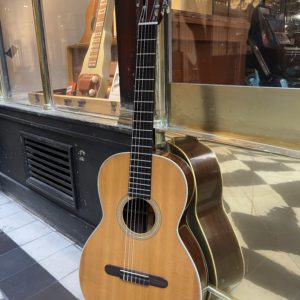1937 GIBSON L-0
€7.875,00
In stock
The prices indicated correspond to the price in the case of payment in-store or by bank transfer. In the case of payment by credit card via the website, a processing fee of [3.25% + €0.25]* will be applied to the total amount of the basket, including delivery costs.
1937 Gibson L-0, in excellent original and preserved condition.
The sister models, the L-0 and L-00, have always been among Gibson’s most popular pre-war flattops. These two models are often confused because they are identical in size and at different times had the same finish characteristics—so much so that even Gibson themselves couldn’t always tell them apart! The L-0, originally featuring a mahogany top finished in an amber varnish, was discontinued in the early 1930s in favor of the L-00, before being reintroduced in 1937 with a “glossy ebony black” finish—a step down from the sunburst-topped L-00, which featured a black finish when first introduced in 1932… welcome to the confusing world of pre-war Gibson cataloging!
When it reappeared in 1937, the L-0 was now at the bottom of the flat-top guitar range, at the unbeatable price of $25 (plus case). “A genuine Gibson for $25” trumpeted the catalog, the same cost as a Martin 2-17 at the time – this low-price strategy also reflected the difficulties faced by all instrument makers during the global economic crisis, with Gibson barely keeping afloat by producing a multitude of low-cost instruments under other brand names (Kalamazoo, Recording King, Cromwell…), distributed to the masses through catalogs such as Montgomery Ward. It is also interesting to note that the late 1930s represents the period when the guitar definitively took over from other Gibson-produced instruments, notably mandolins and banjos, among the middle and working classes. The L-0 is an eloquent example of a professional-quality instrument built towards affordable pricing for the many traveling musicians of the period, as well as for the student clientele traditionally targeted by Gibson through their affiliated teacher programs.
The guitar presented here is a rare example: many of these pre-war Gibson flat-tops were worn to the bone and often dubiously repaired, while this one shows only minor wear and remains exceptionally intact almost nine decades after its construction. The finish is beautifully preserved with slight checking, the body is appointed with white celluloid binding and adorned with a simple three-ply rosette. Also present is the “firestripe” style tortoiseshell celluloid pickguard, an important visual marker of the era. The neck has a fairly shallow V-shaped profile with a rosewood fingerboard. The headstock features the “Gibson” logo stenciled in white on the front, while the back bears a “Made in the USA” branding, indicating that the instrument was intended for export. Finally, the guitar features its original rosewood bridge with a compensated bone nut, as well as its original set of Kluson tuners. It has been fully set up and prepared for playability in our workshop, with fret planing, action and intonation adjustment at the saddle and nut—restoring ideal playing comfort and intonation.
Comes in a modern, form-fitting BAM hardshell case.
